Buen Viaje: Manila-Acapulco-Manila
We are who we are because of our past.
The Buen Viaje Art and Cultural Exhibition at Pintô Art Museum was a wonderful, meaningful event that significantly transported us back in time to the glory days of the Manila-Acapulco-Manila Galleon Trade.
There were opportunities to learn not only from the enlightening lecture by Ambeth Ocampo and the amazing artworks of Filipino and Mexican artists on display. There were also lively performances of gigantes as well as a duo of Filipino specialty cuisines like freshly made empanadas and piping-hot chocolate—all of which are both truly Filipino and Mexican. The event was a reminder that we are indeed sister countries with colorful shared history. This milestone was done in cooperation with the Embassy of Mexico in the Philippines.
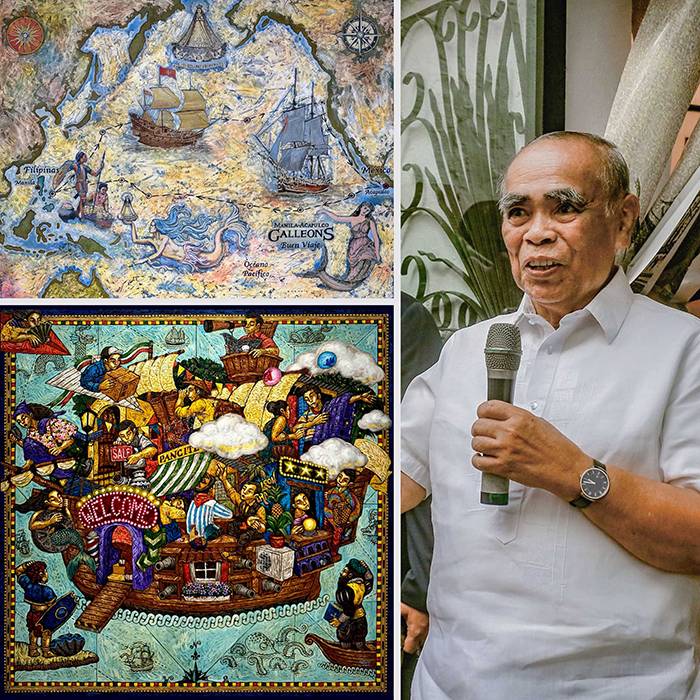
Our dear friend, neurologist par excellence and art collector and connoisseur, Dr. Joven Cuanang, proved to be the focal mover and shaker of this event. The president and founder of the famous Pintô Art Museum and Arboretum in Antipolo was present along with the Mexican Ambassador to the Philippines Daniel Hernandez Joseph, to welcome distinguished guests like members of the diplomatic corps, art lovers, students, and more.
In his lecture “Mexico Under Our Skin,” historian Ambeth Ocampo shared that the 250 years of the galleon trade between the Philippines and Mexico from 1565 to 1821 was rich in economic and cultural exchange between the East and the West. Manila and Acapulco were entrepots in this first transcontinental maritime economic activity in the world.

We all learned that the “products of the East, particularly China, Japan, India, the Philippine islands, and the rest of Southeast Asia were brought to Manila and on to Acapulco to reach the Western world. On their return trip, products from Mexico, Spain, and Latin America were loaded in Acapulco and brought to Manila.” These twin cities were bustling with economic activity. Manila became a “melting pot” in the Orient —a high point in its history. Manila was the first “true world city.”
These voyages in the Pacific were fraught with dangers, both from the wrath of nature and pirates, and many ships sank to the depths of the ocean.

My brother Mark, the historian in our family, said that on many of these dangerous trips, the grace of the Nuestra Señora de la Paz y Buen Viaje was prayed for, to ensure safety from piracy as well as raging storms in the high seas. To this day veneration of the Virgin continues, highlighted by pilgrimages.
Given that the 450-year-old Antipolo Cathedral, now an international Catholic shrine, is home to the Nuestra Señora, and the Pintô Art Museum and Arboretum are located in this pilgrimage hill town east of Manila, it is only appropriate for Buen Viaje to be celebrated here.
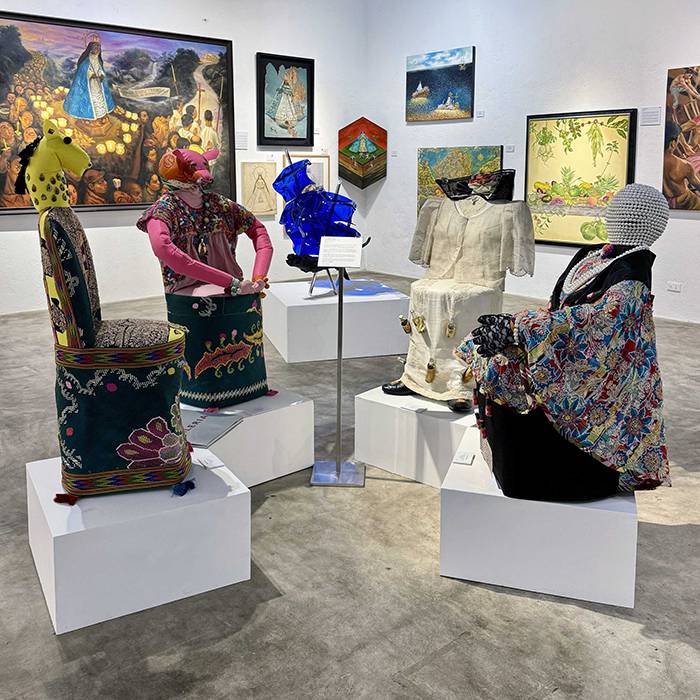
Pintô aims to champion Philippine art, culture, and ecology with this exhibit, highlighting the shared enrichment of both Mexico and the Philippines in these areas. Our language, manners, cuisine, clothing, natural landscapes and many more have interwoven, becoming part of who we are now. Both nations struggled for independence from Mother Spain, and our histories are parallel in many ways as we have also assimilated the richness of the Iberian culture.
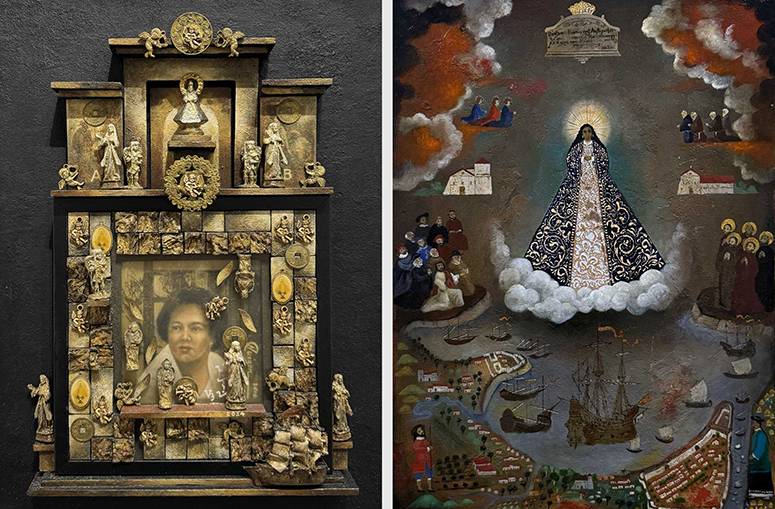
On top of this, maritime history expert Bobby Orilloneda from the National Museum gave a lecture focusing on the treasures of these sunken galleons.
“The Galleon Trade” gallery exhibition by Gallery Prints also features a rich collection of maps, prints, vintage and current pieces, and other objects pertinent to the centuries of galleon trade.
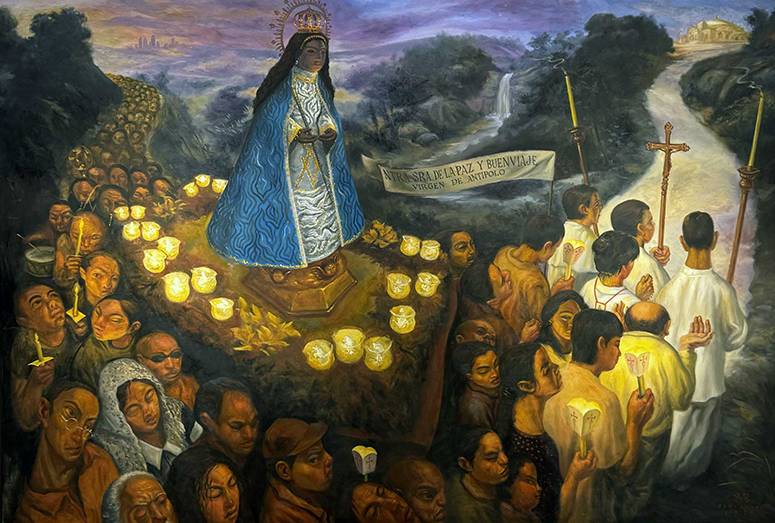
The Nuestra Señora de la Paz y Buen Viaje statue, also known as “the Virgin of Antipolo,” holds historical importance in the context of the galleon trade as a symbol of safe journeys and blessings for perilous voyages—reflected in contemporary artists’ work by Elmer Borlongan, Manny Garibay, Mark Justiniani, Bon Mujeres, Anthony Palomo, Arturo Sanchez Jr. and Lanelle Abueva-Fernando, to name a few—curated by participating artists Jim Orencio, Ferdie Montemayor, Erwin Leaño and Carlomar Daoana. Valeria Cavestany’s four-piece textile sculpture entitled “Buen Viaje Maria Clara Tabasco” is notable for its hybrid Mexican, Filipino, Spanish and Chinese influences, bonded by the glue of the Catholic religion.
The exhibition runs until June 23 with festivities including a lecture on the culinary traditions of Mexico and the Philippines and its permutations in both cultures, “The Foods That Crossed The Pacific” by culinary expert, scholar and author Claude Tayag, and the book launch of My Friend Frida Kahlo by Plet Bolipata.
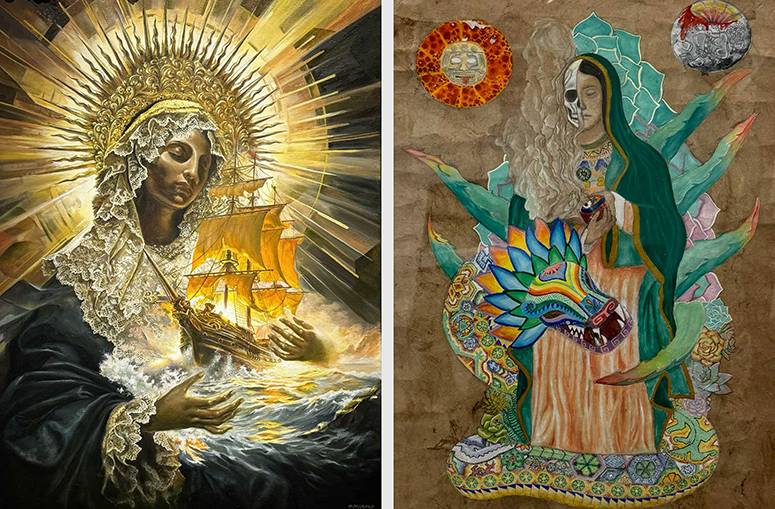
Over a hearty snack at the Rizal Café, we learned some trivia from Dr. Cuanang about how Filipino sailors from Quezon and Bicol, as punishment on the seas, would be denied their traditional tuba drink made from coconut sap. Their local fermentation skills influenced Mexicans to create tequila from agave, showcasing Filipino ingenuity.
During the Sumuroy Rebellion, Filipinos’ resourcefulness with fermentation was evident. They also turned Mexican-imported pineapple leaves into fine piña cloth, a national treasure used in abaca weaving.

The song “Bahay Kubo” lists 13 vegetables, with three—sigarilyas, sitaw and bataw—native to the Philippines, highlighting the country’s rich agricultural heritage and innovative spirit.
My sister Yvonne Romualdez fell in love with a painting done by Elmer Borlongan depicting a scene with our Lady of Antipolo and asked if it was for sale. Dr. Cuanang replied with a sheepish smile, “I’m sorry, that’s from my personal collection hanging in my living room.” He had loaned it to the museum for the duration of the event.
Art is the essence of our soul, while beauty is in the eye of the beholder. This Buen Viaje event proved that beauty is multicultural, all-encompassing, and we beholders embrace this.
Catch the Buen Viaje Art and Cultural Exhibition ongoing until June 23.
* * *
For more information, visit Pinto Art Museum and Arboretum Facebook Page or call Joseph Kua at +632 8097 1015.


